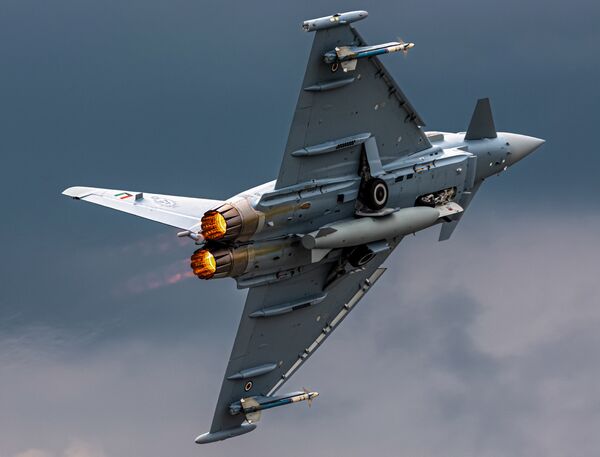
With the Eurofighter Typhoon set to remain in global service through into the 2060s, the LTE package is an essential element in maintaining the capabilities of the jet while also attracting new and follow-on customers. (Leonardo)
The NATO Eurofighter and Tornado Management Agency (NETMA) has launched the activities phase of the Eurofighter Long Term Evolution (LTE) project, awarding its first contracts to industry.
Speaking at BAE System's Warton production facility in northern England on 14 May, David Hulme, Eurofighter programme director for the consortium member, disclosed the milestone that came five years after the LTE project was launched with the first study contracts awarded at the Paris Air Show in 2019.
“LTE early-activities contracts have been awarded, and these will start a three-year technology maturation programme,” Hulme said.
Also known as Eurofighter Evolution (and sometimes Typhoon Evolution), LTE is being developed concurrent to the ongoing Phase Enhancement (PE) upgrade packages, and is geared at taking the aircraft's capabilities out to beyond these PE packages.
LTE includes upgrades for the aircraft's mission system architecture, defensive aids, the human-machine interface (HMI), operational flexibility, and engine performance. As previously noted by Eurofighter, LTE will support greater connectivity via the generation, transmission, and utilisation of increasing amounts of digital data for mission system architecture both onboard (via advanced multispectral sensors) and offboard (via high-performance tactical datalinks) while countering new and emerging threats, including cyber. This will maintain the Eurofighter's ability to operate in a highly contested and congested future operating environment.
Looking to read the full article?
Gain unlimited access to Janes news and more...







